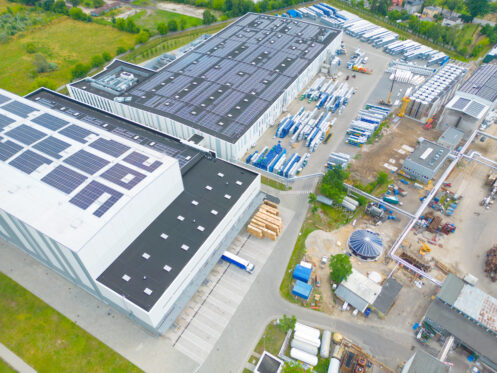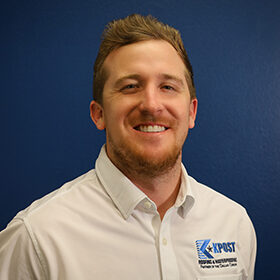Roof waterproofing is key to maintaining your business’s structural integrity and longevity of your Dallas, TX, commercial roof. A well-waterproofed roof not only prevents leaks and water damage but also enhances the overall energy efficiency of the building. Whether constructing a new commercial building or remodeling an existing one, choosing the right waterproofing method can be overwhelming, especially since many options are available. Fortunately, by understanding the best choices for roof waterproofing and focusing on materials and application methods, you can choose the right type for your roof.
Understanding Roof Waterproofing
Roof waterproofing involves applying a protective layer to your roof that prevents water from penetrating the structure. This process is essential because water damage can lead to significant structural issues, such as weakened foundations, mold growth, and compromised insulation. Effective waterproofing extends the life of your roof, reduces the need for frequent repairs, and maintains indoor comfort.
Liquid Waterproofing Membranes
Liquid waterproofing membranes are some of the most popular choices for roof waterproofing due to their ease of application and flexibility. These membranes are applied as a liquid, which then cures to form a rubber-like layer over the roof’s surface. There are different types of liquid membranes, including acrylic-based, polyurethane-based, and bituminous-based membranes. Polyurethane membranes are especially favored for their UV resistance and durability, making them ideal for areas with extreme weather and temperatures.
Liquid membranes can be applied with a roller, brush, or spray, allowing for versatility in covering complex roof shapes. They are perfect for both sloped and flat roofs. They are highly flexible, allowing them to accommodate the contraction and expansion of any roof. They offer excellent adhesion to several surfaces, including concrete, metal, and wood. They are also resistant to ponding water and can be easily repaired if damaged.
Bituminous Waterproofing
Bituminous waterproofing systems have been used for decades and are known for their reliability and durability. These systems usually consist of a layer of bitumen (asphalt) combined with other reinforcing materials to create a waterproof barrier. There are two primary types of bituminous systems: bituminous membranes and bituminous coatings. Bituminous membranes, such as modified bitumen, are prefabricated sheets that are either self-adhesive or applied using a torch. On the other hand, bituminous coatings are applied as a liquid and cure to form a waterproof layer.
Bituminous membranes are only applied after a roof has been carefully prepared. However, once applied, they are highly resistant to weathering, UV rays, and mechanical damage. Bituminous systems offer great protection against water infiltration and are suitable for sloped and flat roofs. They may, however, require maintenance over time to prevent deterioration and cracks.
EPDM Rubber Roofing
Ethylene Propylene Diene Monomer (EPDM) is a synthetic rubber membrane widely used for flat roof waterproofing. Known for its flexibility and durability, EPDM is an excellent choice for both commercial and residential roofs. EPDM membranes are typically installed in large sheets that adhere to the roof surface using adhesive or mechanical fasteners. The seams between the sheets are sealed with special tapes or adhesive to ensure watertightness.
EPDM is highly resistant to UV radiation, ozone, and extreme temperatures, making it perfect for many climates. It has a long lifespan, often exceeding 30 years, and requires minimal maintenance. It is also environmentally friendly and can be recycled once it runs its course.
PVC Roofing Membranes
Polyvinyl Chloride (PVC) roofing membranes are popular for flat and low-slope roofs. These membranes are known for their strength, durability, and energy efficiency. They are installed in large sheets heat-welded at the seams to create a waterproof barrier. The installation process is relatively quick and straightforward, making it a cost-effective solution for many business owners. PVC membranes are also reflective, so they can cut energy costs by keeping the building cooler. PVC is a lightweight material, so there isn’t much weight put on the roof. They must be regularly maintained, especially in cooler climates, or they can crack.
TPO Roofing Membranes
Thermoplastic Olefin (TPO) is a relatively new roofing material that combines EPDM’s durability with PVC’s energy efficiency. TOP membranes are popular for both commercial and residential building owners. TPO membranes are installed in sheets and can either be mechanically attached, ballasted, or fully adhered. The seams are later heat-welded to ensure a watertight seal. TPO is resistant to UV radiation, chemicals, and punctures. It is also energy efficient since it reflects heat, so you may notice a difference in your utility bills once it is installed on your roof.
Metal Roof Waterproofing
Metal roofs are inherently durable, but they still require waterproofing to prevent corrosion, rust, and leaks. Waterproofing a metal roof involves applying a coating that seals joints and seams. Standard waterproofing methods for metal roofs include elastomeric coatings, silicone coatings, and acrylic coatings. These coatings provide a seamless barrier that protects against water penetration and weathering. Coatings are applied with a brush or spray in multiple layers to ensure complete coverage. The surface of the roof must be cleaned and primed before application to ensure proper adhesion.
Metal roof coatings extend the life of the roof by protecting it from corrosion and leaks. They can also improve energy efficiency by reflecting sunlight and reducing heat absorption. Some coatings also add an aesthetic finish to the roof. Ideally, you should choose a quality coating for your metal roof and ensure regular maintenance is carried out to prevent wear and tear over time.
Choosing the Right Roof Waterproofing Method
Selecting the best roof waterproofing method depends on several factors, including the type of roof, climate, budget, and the specific needs of the building. UV-resistant materials like PVC, TPO, and elastomeric coatings are ideal in areas with high temperatures and intense sunlight. These materials reflect sunlight and reduce heat absorption. In cold climates, flexibility and resistance to thermal cycling are crucial. EPDM and bituminous membranes perform well in colder settings and are less prone to cracking. If you live in an area with heavy rainfall, you may want to choose a bituminous membrane due to its water resistance and durability.
You must also consider the slope of your roof. Flat roofs are far more susceptible to water pooling, making waterproofing essential. EPDM, PVC, and TPO membranes are commonly used for flat roofs due to their seamless application and water resistance. Slope roofs naturally shed water, but they still need to be waterproofed to protect against leaks. Liquid membranes and bituminous coatings are effective for sloped roofs, providing a continuous protective layer.
The Experience and Knowledge You Need
If you are seeking the best waterproofing treatment for your commercial establishment in Dallas, you have many options to pick from. Ideally, you should select the one that best suits your company’s roof and climate. Here at KPost Company, we can assist you with your commercial roof waterproofing needs. We have the experience and knowledge to help you keep your roof in excellent condition throughout the years. Besides waterproofing treatment, we also handle commercial roof repairs, installations, architectural panels, umbrella programs, and insulating concrete. Our roofers also work on residential roofing and solar panels.
Contact us today to schedule a consultation so we can get KPost Company roofers waterproofing your roof.

